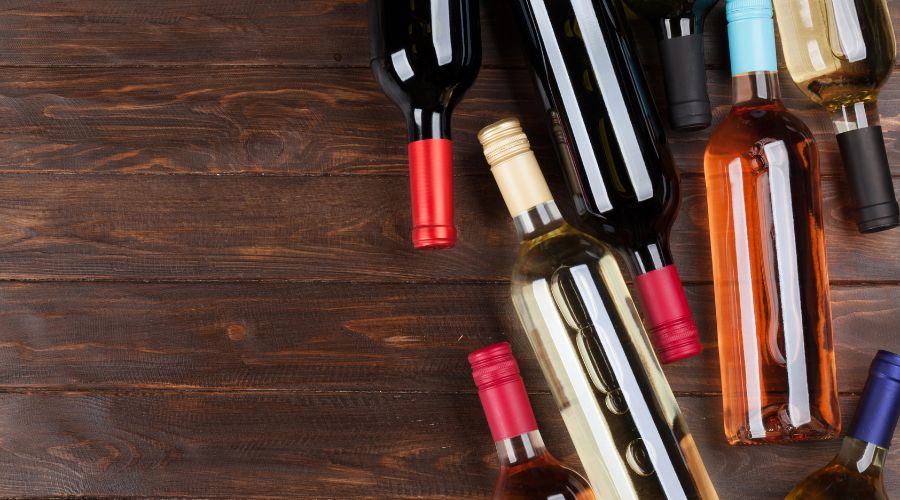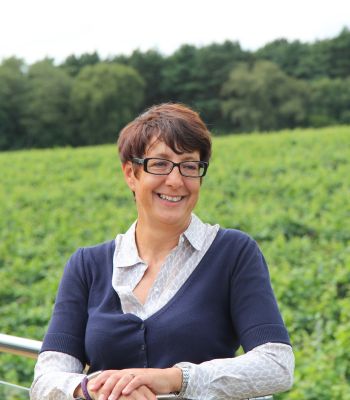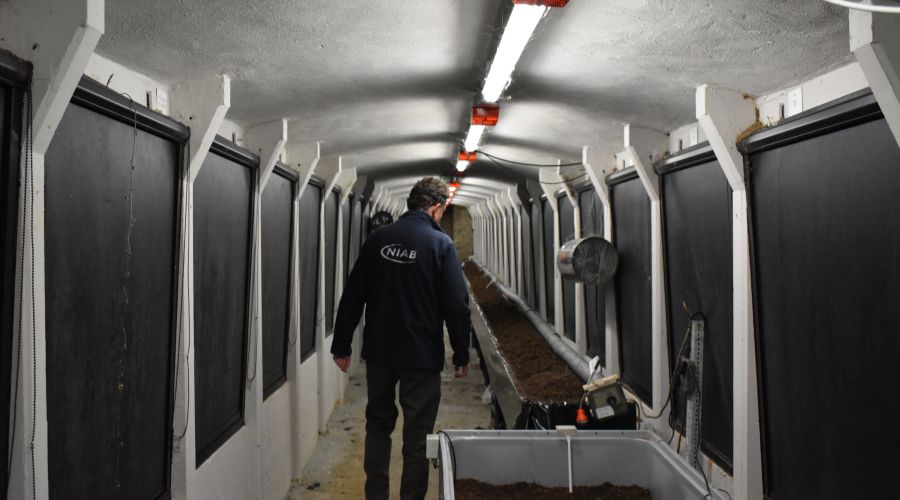English wine gathers pace, but investment is needed
13th June 2025
Despite a global and national decline in wine consumption, UK wine continues to see rapid growth – but challenges remain. WineGB and NIAB experts shared their thoughts at this year’s Oxford Farming Conference. Sarah Kidby reports.

The latest WineGB figures show UK sparkling wine production rose by a staggering 187% in five years – reaching 6.2 million bottles in 2023. While still wine is yet to catch up, it’s gathering momentum and also saw a boost of 117%, to 2.6m bottles, in the same period. Now the UK’s fastest-growing agricultural sector, English and Welsh wine is outpacing the soft fruit sector’s growth by 36%.
This is in spite of a global and national decline in wine drinking, with vineyards being grubbed up elsewhere in the world to balance out the wine glut. The UK is taking more of the market share year on year – particularly for sparkling wine, and still is headed in the same direction, according to Plumpton College director of wine, Sam Linter.
This could place English and Welsh wine producers in a good position in the future, she added, as when the glut balances out, those in other parts of the world who grubbed up vines will have to build their production levels back up, whereas our domestic producers will be well placed to plug the gap.
Sam was joined on the stage by Dr Belinda Kemp, NIAB group leader – viticulture and oenology research, who also noted changing consumer preferences – 15% ABV reds are out and lighter sparkling and low and no alcohol wines are in, she said.
Despite the positives, there are a number of challenges for the sector, not least climate change, labour shortages and the ever-dwindling list of available ag-chems. Additionally, we need to be producing more wine – WineGB wants to see exports increase, plus more grapes produced per vine, as the UK is currently around half the average for Europe.
Sam and Belinda shared the research being done to tackle these issues.
Unpredictable weather

Weather, of course, is a significant challenge and not only for the UK. Yields are determined the year before the crop, with buds forming for the following year, which can cause challenges when there are two bad years back-to-back. Intermittent warm sunny days are particularly problematic as this disrupts growth and berry development, whilst long spells of rain straight after warm weather leads to an increase in disease.
Ten years ago, there was little spotted wing drosophila (SWD) but now the pest is having a significant impact on the industry and it will be seen more and more, Belinda said. Last year was also a difficult year for botrytis and downy mildew – and NIAB is looking at innovations to manage these as we lose ag-chems.
With wine being left in the bottle for at least a year before degorging and selling, but more often 2-3 years or even up to five years, producers are always making wine for future years – meaning it’s important to exploit the crop you have, to avoid ending up with stock holes in bad weather years, Sam said.
Heat accumulation is another issue – if temperatures rise too high, we can’t make sparkling wine. It’s not as simple as just picking earlier either, as long cold spells slow down ripening considerably – there were some vineyards picking into mid or even late November last year, which is unheard of, Belinda added.
Piwi varieties
There are now around 800–1,000 disease resistant varieties bred in Italy, Switzerland, France and Germany, which could assist with sustainability and reducing sprays – on average vineyards are spraying 12–14 times a year, compared to the 3–4 sprays required for disease resistant varieties.
However, while they sound wonderful, they are not resistant to all diseases and are not bred in countries with the same level of precipitation or weather patterns that we have in the UK, Belinda cautioned. Not all are resistant to botrytis, for example. There is also some pushback from consumers who do not recognise the names of the varieties.

More data is needed to learn how to ripen these varieties and get the levels of potential alcohol needed, to avoid doing more work in the winery later. Plus, Sam pointed out that we need to be smarter about how we market these wines. Seyval Blanc, for example, has been grown in the UK for 30 years and consumers buy it, often without knowing the name of the variety.
Tourism and leisure are also essential for vineyards worldwide, particularly for the small to medium enterprises, she added.
NIAB has plans to develop a multi-site network across UK vineyards to assess disease resistant grape varieties, from vines to wine. Another challenge of piwis is they can have higher protein levels which can lead to problems with production, filtering, settling the wine and increased energy usage in the winery – this is currently being studied at Plumpton.
Lack of labour
Since Brexit there has been a shortfall in overseas workers and most of those that do come to work go into other areas of agriculture or larger vineyards who need workers throughout the year – so smaller vineyards needing seasonal workers are struggling the most.
Local labour, meanwhile is more expensive, less reliable and the work rate is less than half, Sam said, as they have often not built up the physical strength, skills and expertise needed for picking. More skilled workers are needed – particularly at entry level.
There are 2,300 people permanently employed on UK vineyards and we need to source 8,000 seasonal workers throughout this year. WineGB predicts the permanent workforce will need to increase by 50% in the next three years, and a previous study found 30,000 workers (18,000 permanent) will be needed by 2040.
To this end Plumpton College has completed a National Competency Framework which identifies the competencies, skills and experience that the workforce needs; and the skills shortages in the industry. It was published in February on the Plumpton and WineGB websites. It also includes job description templates for viticulture and wine making, and average salary ranges.
Asked how to address the lack of labour, Sam said young people coming out of colleges know little about the English wine industry – and we need to spread the word about the benefits of working in the sector.

Research underway
Belinda explained the ongoing research at NIAB to tackle some of these issues. NIAB’s Rhizolab is one of very few in the world – and it’s the only one planted with grape vines. Meanwhile it has also recently opened a new Wine Innovation Centre and lab where it is carrying out trials with disease resistant varieties, as well as noble varieties. A key challenge it’s exploring is the sudden increase in calcium tartrate crystallisation, which can form in the wine and resemble glass shards.
Other work being carried out by NIAB includes:
- A WineGB-funded study to improve yields through spur vs cane pruning. Researchers are finding huge variations so far, with one technique increasing yield in one variety, but not in another
- Using AI to detect diseases
- Tackling pests such as SWD, and the brown marmorated stink bug which is brought in by camper vans – just two bugs per tonne of grapes is enough to taint the wine
- Accelerating wine flavour development to cut energy usage in wineries.
A collaboration between NIAB and Plumpton College will also see Plumpton plant 10ha of vines as part of its centenary, using sensors to explore factors such as wind direction and strength, temperature, leaf wetness, leaf temperature, rainfall, pests, fauna, bulk soil type, cation exchange, compaction, conductivity, soil nutrients and temperature, illuminance and irradiance. The overall aim is to establish a protocol to optimise the planning and creation of new vineyards, to increase the volume of production. The field will be left bare for at least a year before planting, to gather information on what to plant and how. Researchers will be using 5G to gather information and livestream it from the sensors to a dashboard.
Part of the SMART Vineyard project also aims to enhance robot work, though speakers predicted that robotic pruning is a way off.
Read more vine news.
